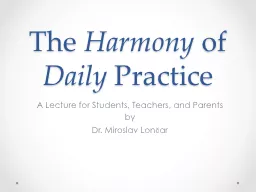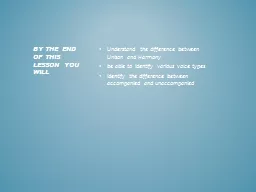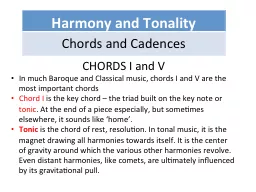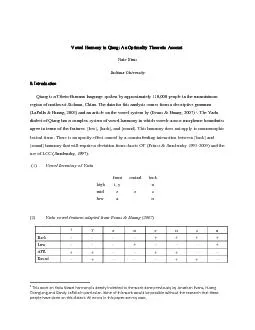PPT-The Harmony of Daily Practice
Author : conchita-marotz | Published Date : 2018-03-11
A Lecture for Students Teachers and Parents by Dr Miroslav Lončar The Harmony of Daily Practice Intriguing titleLets take a close look at its meaning Goals
Presentation Embed Code
Download Presentation
Download Presentation The PPT/PDF document "The Harmony of Daily Practice" is the property of its rightful owner. Permission is granted to download and print the materials on this website for personal, non-commercial use only, and to display it on your personal computer provided you do not modify the materials and that you retain all copyright notices contained in the materials. By downloading content from our website, you accept the terms of this agreement.
The Harmony of Daily Practice: Transcript
Download Rules Of Document
"The Harmony of Daily Practice"The content belongs to its owner. You may download and print it for personal use, without modification, and keep all copyright notices. By downloading, you agree to these terms.
Related Documents














